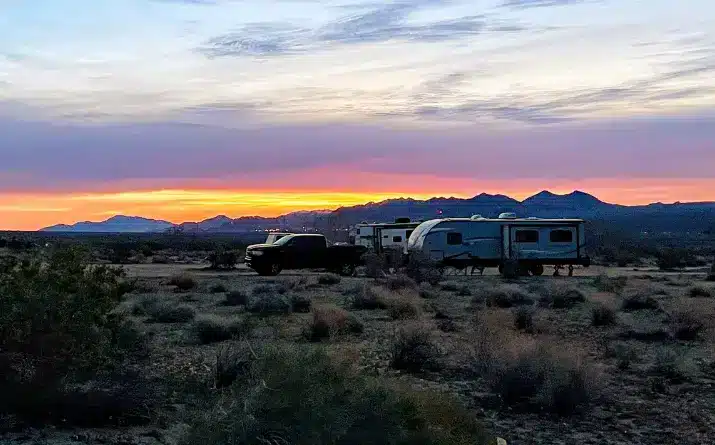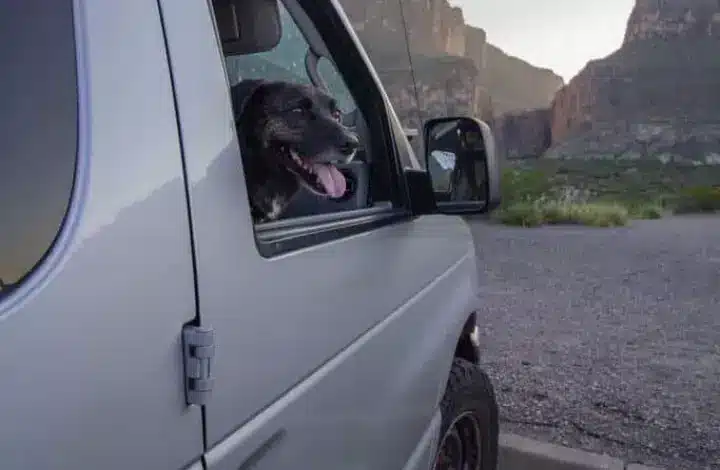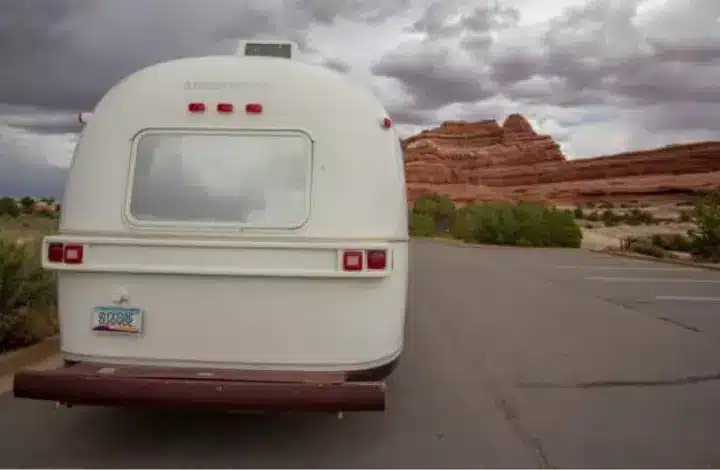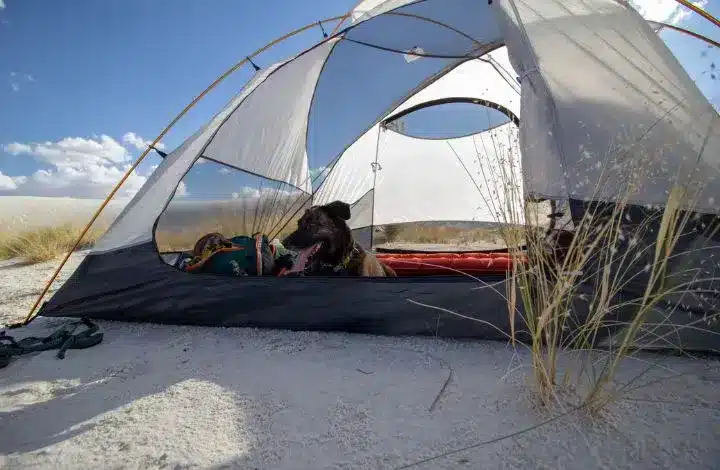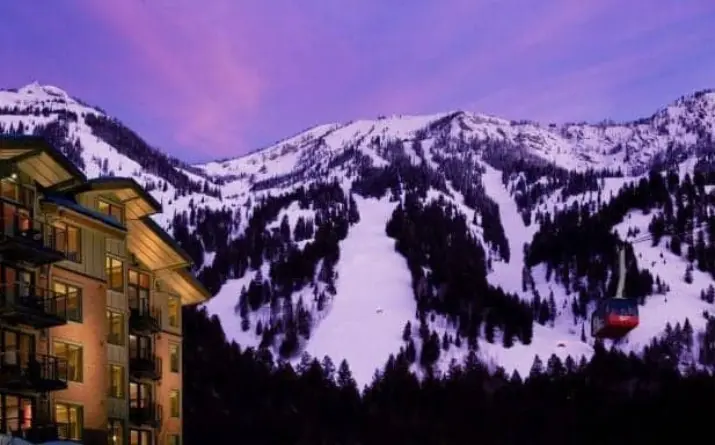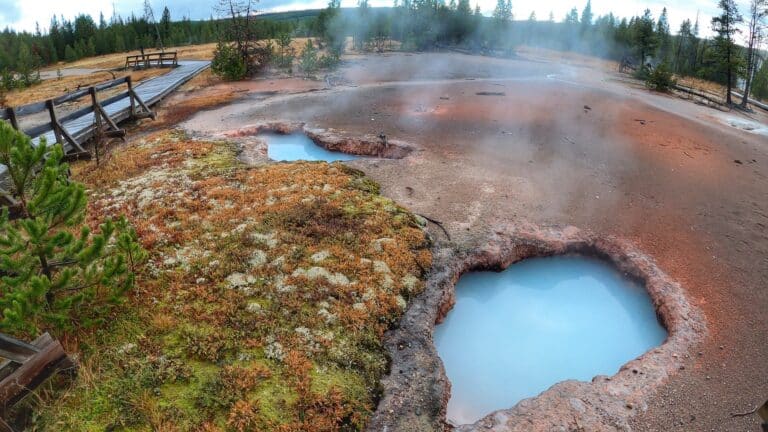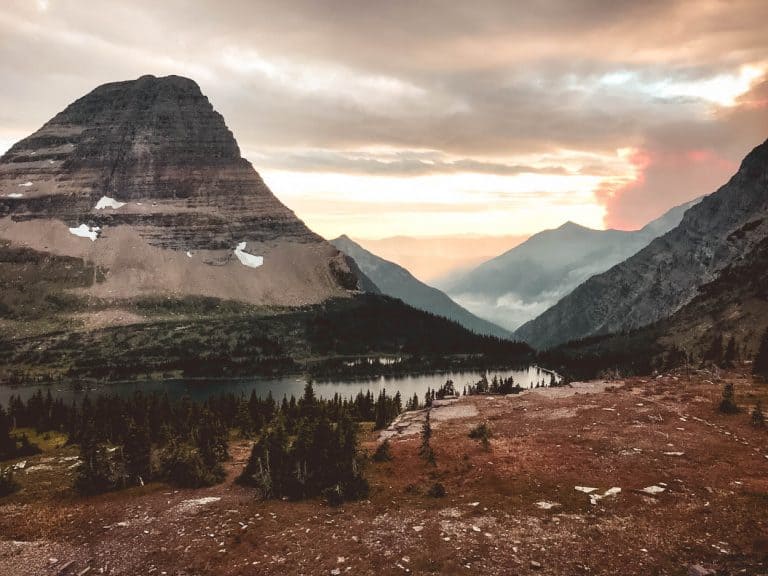Your Best RV Guide to Joshua Tree National Park
When we lived in Phoenix, Joshua Tree was our “home” park that we often took our campervan to. With our campervan, we usually stayed inside the park. However, returning now with our forty-foot motorhome, we prefer to stay outside the park.
That being said, you can visit Joshua Tree with whatever camping equipment you have.
With its location near the large cities of Phoenix and Los Angeles, Joshua Tree National Park now receives around three million visitors per year. With those kinds of crowds, it will pay off to plan your RV trip ahead of time.
Today, I’ll try to prepare you for taking your RV to this beautiful, convenient National Park hidden away in the California desert.
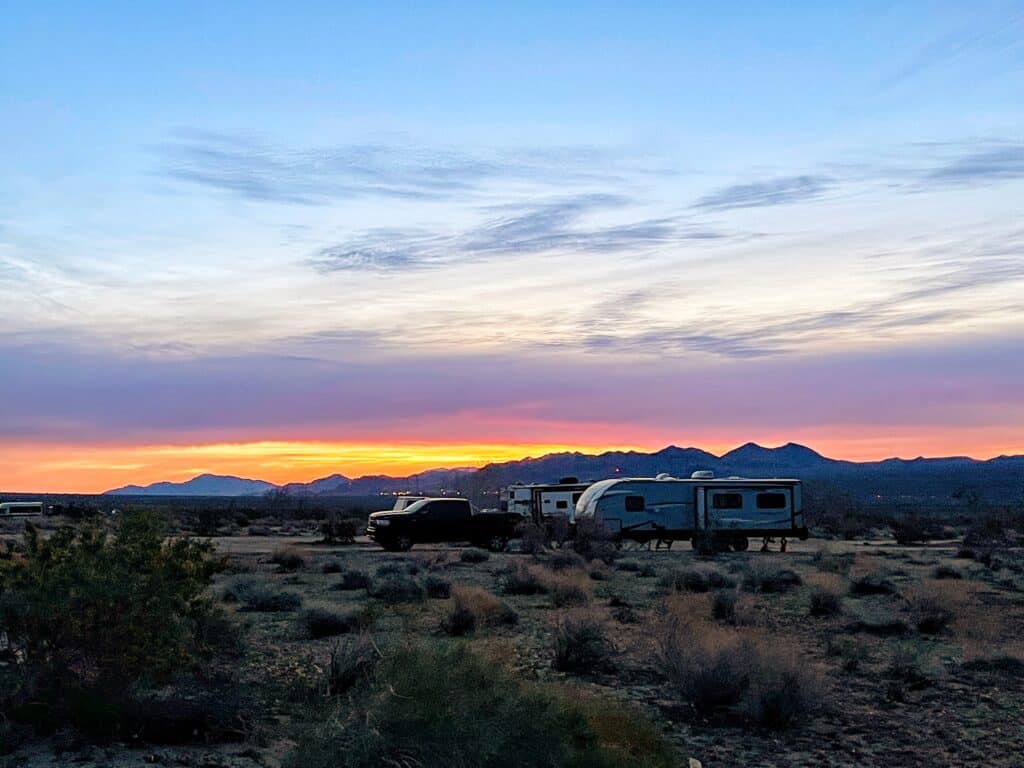
Is Joshua Tree National Park RV Friendly?
There’s easy access off of I-10 for your RV, with minimal hills to climb or curvy roads to navigate.
Once inside Joshua Tree National park, claim your campsite with an RV and have another vehicle you can drive to explore the area.
Maximum RV Length at Joshua Tree
Please note: the longest combined length that the park campgrounds can accommodate is 36 feet (RV and vehicle, from end to end).
The first-come, first-served RV sites can be quite competitive. Leaving a camp chair to hold your spot isn’t going to cut it. There are some campgrounds inside the park that take reservations, and plenty outside the park as well.
If you have a longer RV, I definitely suggest trying to book a reservation to ensure you’ll have a site big enough for your equipment.
Given these considerations, Joshua Tree is most RV friendly if you have a smaller RV (maybe under 26 feet). However, there are so many camping areas outside the park, we still believe visiting Joshua Tree can be easy, even in a bigger Class A RV like ours.
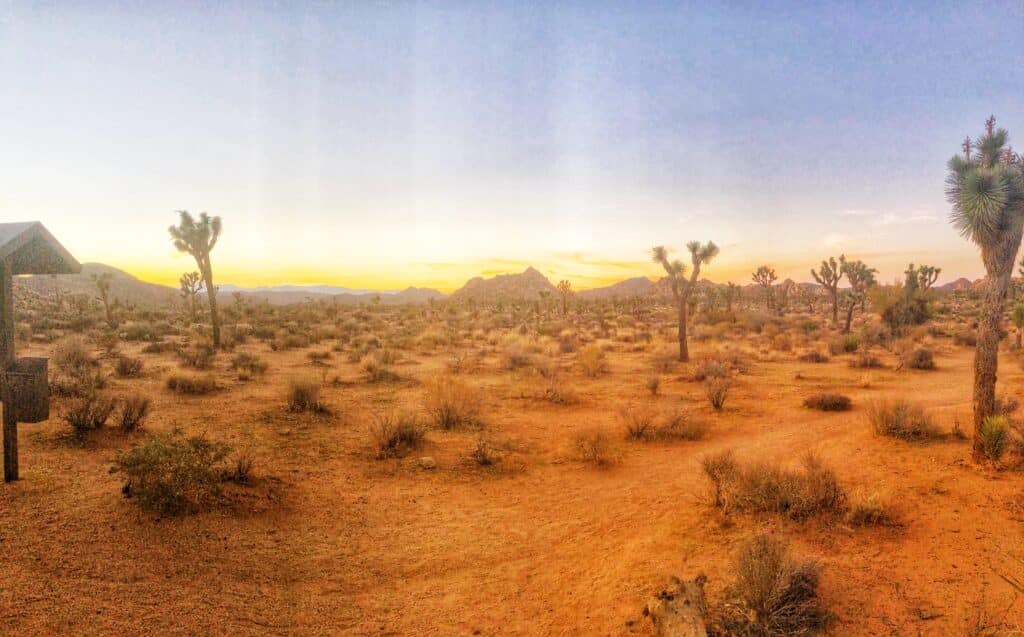
Where to Stay in Joshua Tree National Park with an RV
So first things first, let’s talk about where to park your RV when you visit Joshua Tree.
We really love the town of Joshua Tree itself, outside of the park, so sometimes will opt to stay outside the park closer to town.
The access to what we like to do inside the park isn’t too bad if camping in the town of Joshua Tree. It takes about fifteen minutes to get from the town to the North entrance of the park.
That said, it’s important to know that the park campgrounds are full every weekend year-round. Moreover, during peak season (February through May) the campgrounds may be full even through the weekdays.
If we’re trying for a first-come first-served spot, we always try to arrive on Wednesday to increase our chances of getting a site.
If you’d like to park at one of the campgrounds that take reservations, you’ll find all of the availability on recreation.gov, up to six months in advance.
The in-park campsites have no hookups, but some campgrounds have a water fill available, and a dump station nearby as well.
Review the following list of campgrounds, which are my favorite spots inside the Joshua Tree National Park. Reservations for all of these campgrounds can be made by searching the campground name at recreation.gov:
Black Rock Campground
Black Rock Campground is a national park service campground that has 99 sites, a water fill and a dump station. Each campsite has a fire ring and picnic table, and there are restrooms available.
This campground can accommodate RVs up to thirty-five feet in length. Reservations are available on recreation.gov.
Jumbo Rocks Campground
Jumbo Rocks Campground is our favorite camping spot inside the park. This campground offers an excellent location with good access to rock climbing and hiking. Not to mention the mesmerizing jumbo rocks!
There are 124 sites, but there is no water or dump station available. There are however vault toilets onsite.
Reservations are required from September to May, and can be made on recreation.gov.
Cottonwood Campground
Cottonwood Campground is a national park service campground with 62 sites. It has a water fill and a dump station, and there are restrooms available with flush toilets.
Reservations are required from September to May, and can be made on recreation.gov.
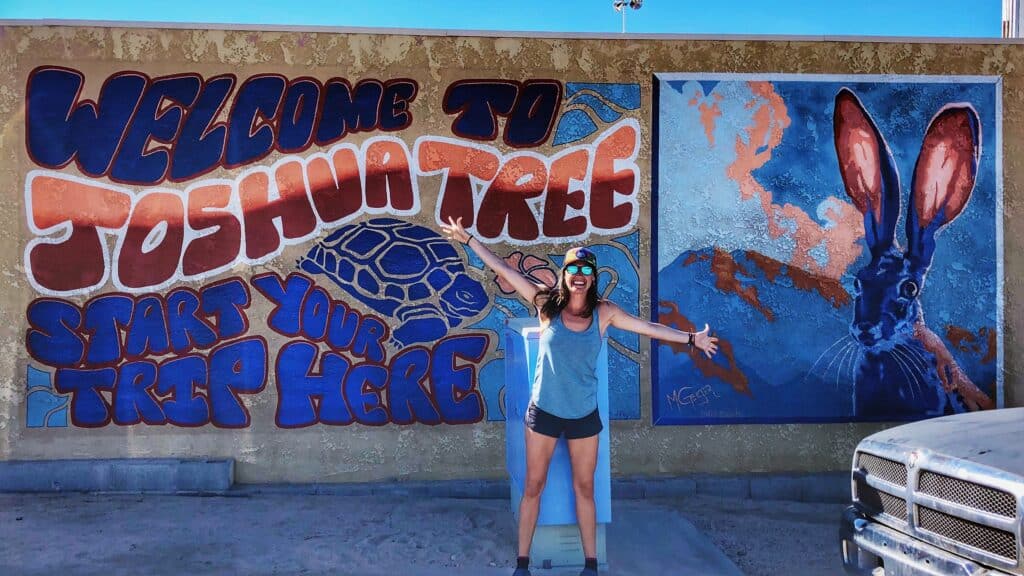
Indian Cove Campground
Indian Cove Campground is a national park service campground with 101 sites. It does not have water or a dump station available. There are vault toilets on-site.
This campground offers thirteen group campsites, which are the only group sites that take reservations inside Joshua Tree National Park. The Max RV length is only twenty-five feet at Indian Cove.
If you have a larger RV like ours, or just don’t like to plan your travels six months in advance, staying outside the park might be a better option for you.
The next section summarizes the best options for RV boondocking sites (no hookups) near Joshua Tree National Park
Joshua Tree South Boondocking
Joshua Tree South Boondocking is BLM land that allows free dispersed camping with a fourteen-day stay limit.
We recently camped here for two full weeks. We used South Boondocking as a base, then explored the south side of Joshua Tree from there.
This boondocking site is huge and can accommodate many RVs of all shapes and sizes. It takes about 15 minutes to drive to the main parking area inside the park, close to all south side hiking trailheads.
We also love that Joshua Tree South Boondocking is within close proximity to Indio within the greater Palm Springs area. Enjoy quick access to live entertainment and a variety of dining options.
Joshua Tree North Boondocking
Joshua Tree North Boondocking is BLM land offering free dispersed camping with a fourteen-day stay limit.
This is our usual park-up spot for regular visits to Joshua Tree, whether in our motorhome or campervan.
We just prefer not having to deal with reservations six months in advance, or battling it out for first-come first-served sites.
There is also plenty to love about the town of Joshua Tree and the amenities it provides. We hike in the park all day and come to town to eat out in one of the local restaurants. There’s also plenty of space here for RVs of just about any size and setup.
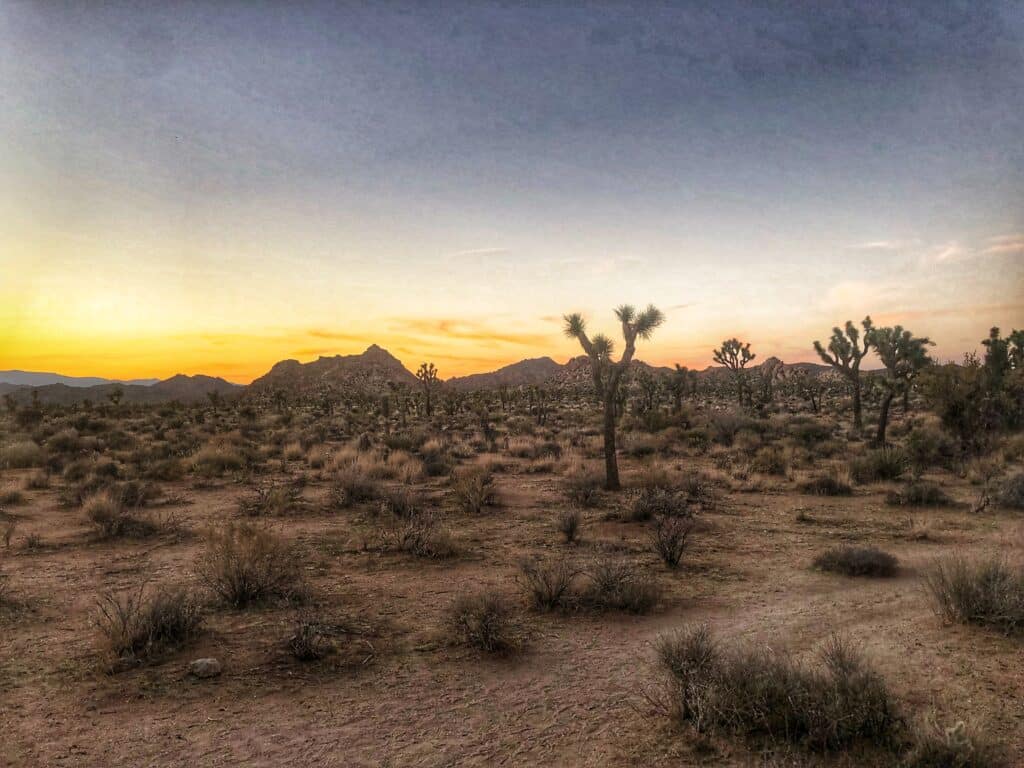
What to Do on RV Trip to Joshua Tree National Park
No matter where you choose to stay, our top three favorite activities inside Joshua Tree National Park are rock climbing, hiking, and star gazing. But the specifics of what to do on your Joshua Tree RV trip has a lot to do with where you stay.
Activities Inside the Park
If you’re camping on the South side of the park, there’s a short hike to Mastadon Peak that’s worth it. We also love the Lost Palms Oasis hike if you have time (and endurance) for a seven-mile round-trip hike.
If you’re staying closer to the North entrance, or inside the park, you’ll have access to all of the main attractions of the park.
If you’re interested in rock climbing, you’ll probably want to stay as close to Hidden Valley as possible. You’ll find lots of great climbs there to keep you busy for a while.
As for hiking, you’ll find many of the easy, short hikes accessible from the pull-offs as you drive through the park. For a longer hike, we love the eight-mile round-trip Boy Scout Trail hike.
With this trail, you see the best of Joshua Tree, hiking through a Joshua Tree forest to classic boulder piles.
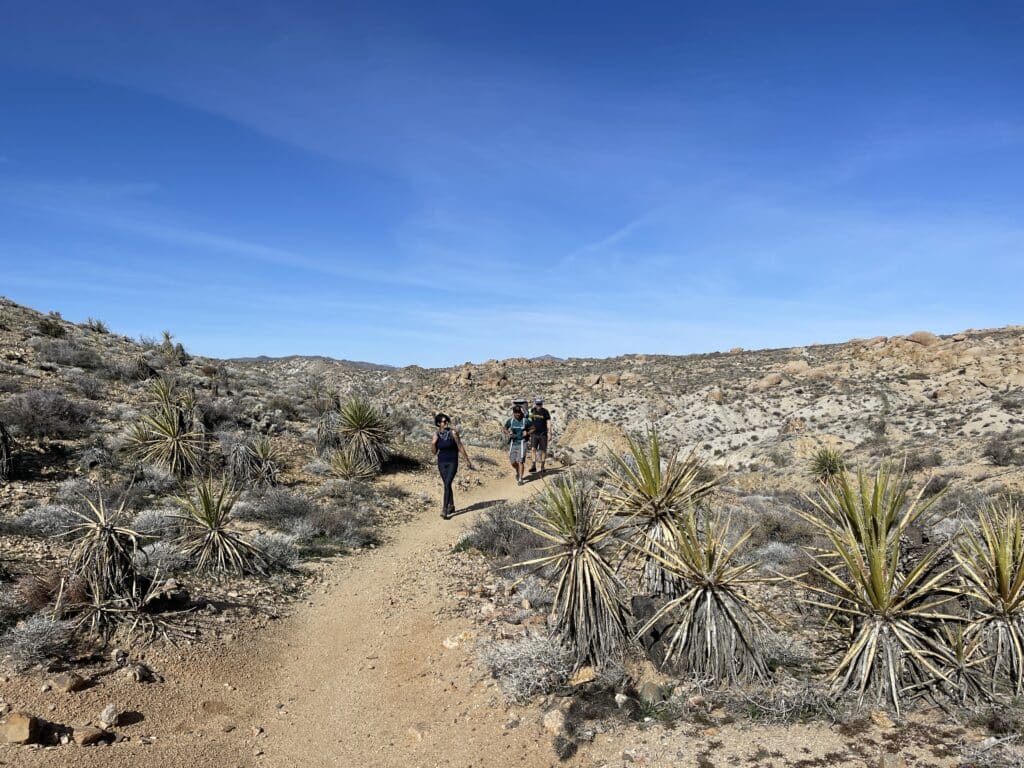
Activities Outside the Park
To complete your Joshua Tree National Park RV trip, you may want to explore the surrounding areas outside of the park as well.
If staying on the South side of the park, you’ll be close to Indio and Palm Springs, CA. We recommend visiting a hot springs resort for a rejuvenating soak at one of the many locations in Palm Desert.
Of course, Palm Springs is a destination of its own, but it’s definitely worth a day of strolling the downtown Main Street shops and sights. If you have time, take the Palm Springs Aerial Tramway up to an elevation of 8516’ with hiking trails and even a restaurant at the top.
If you’re staying on the North side of the park, or inside the park, you’ll enjoy exploring the town of Joshua Tree with its cute shops and restaurants. I’d suggest adding Pioneer Town to your Joshua Tree adventure, too.
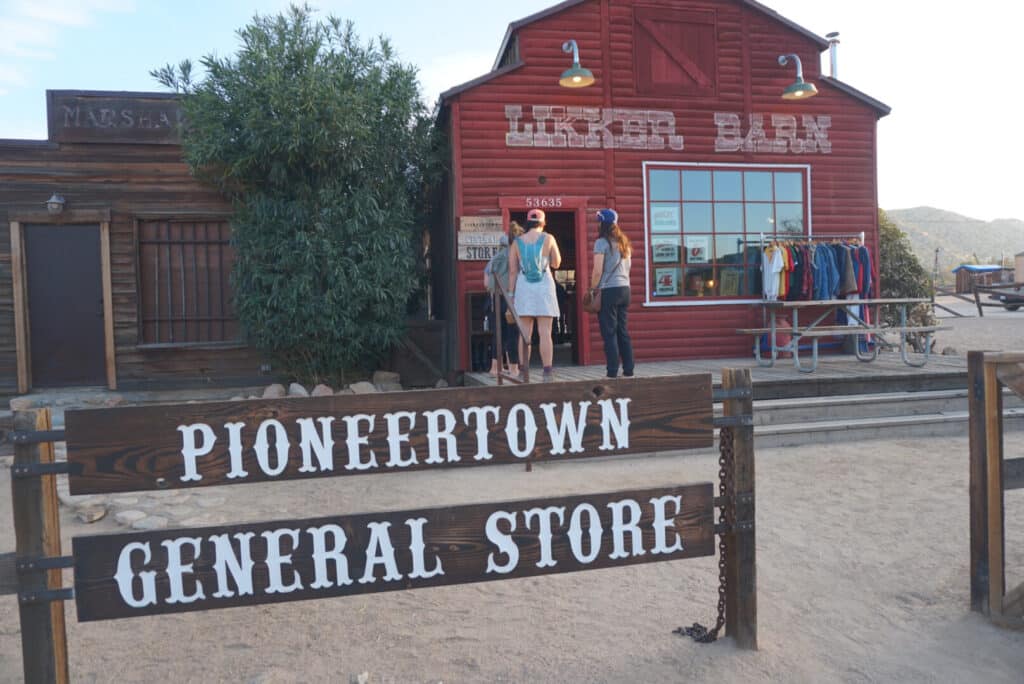
Or if possible, you can make a big loop and do it all! From Phoenix, you could start at the North Entrance to visit the park and town of Twenty Nine Palms and Joshua Tree.
Continue down to Palm Springs, before coming back East on I-10 to stop at the South Entrance for a beautiful hike.
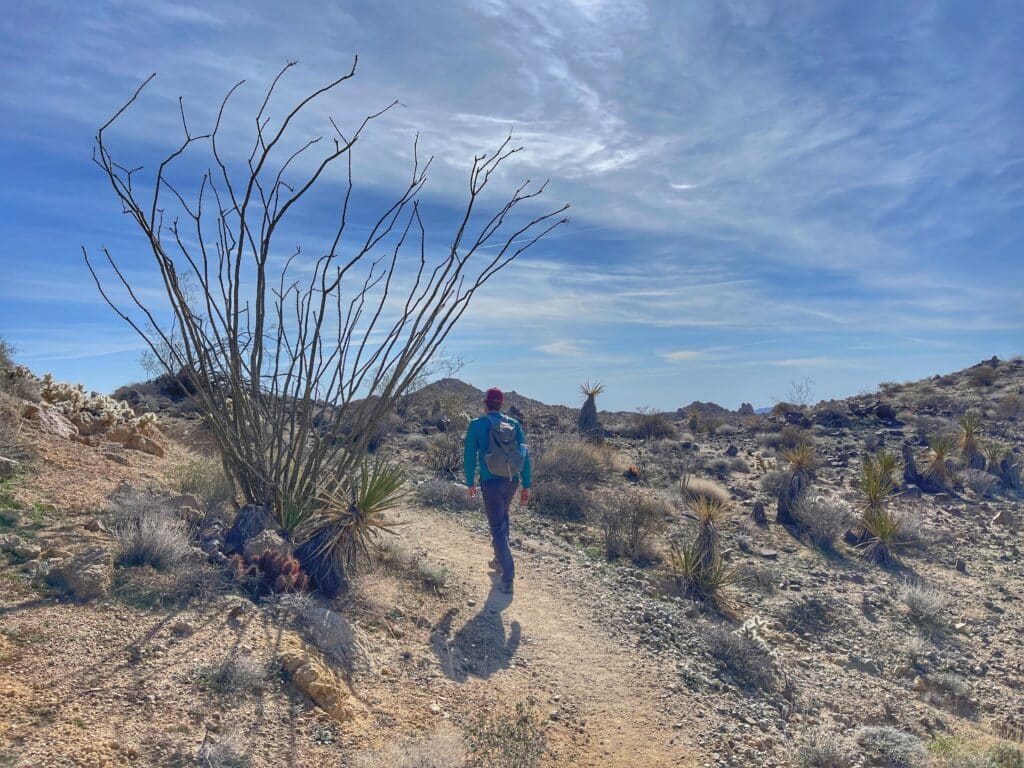
Will You Choose North or South Joshua Tree?
Joshua Tree is about three and a half hours from both Los Angeles and Phoenix. That makes this National Park pretty accessible, whether you live in one of these cities, or are flying into one of them for a visit.
The drive from either direction is fairly boring, but the destination is worth it. If you’re looking for the classic Joshua Tree experience, you’ll probably want to stay somewhere near the North entrance of the park.
If you want a less crowded experience, or maybe this is your second or third time visiting the park, you could choose the South entrance. We love both, but the North side is definitely more classic Joshua Tree.
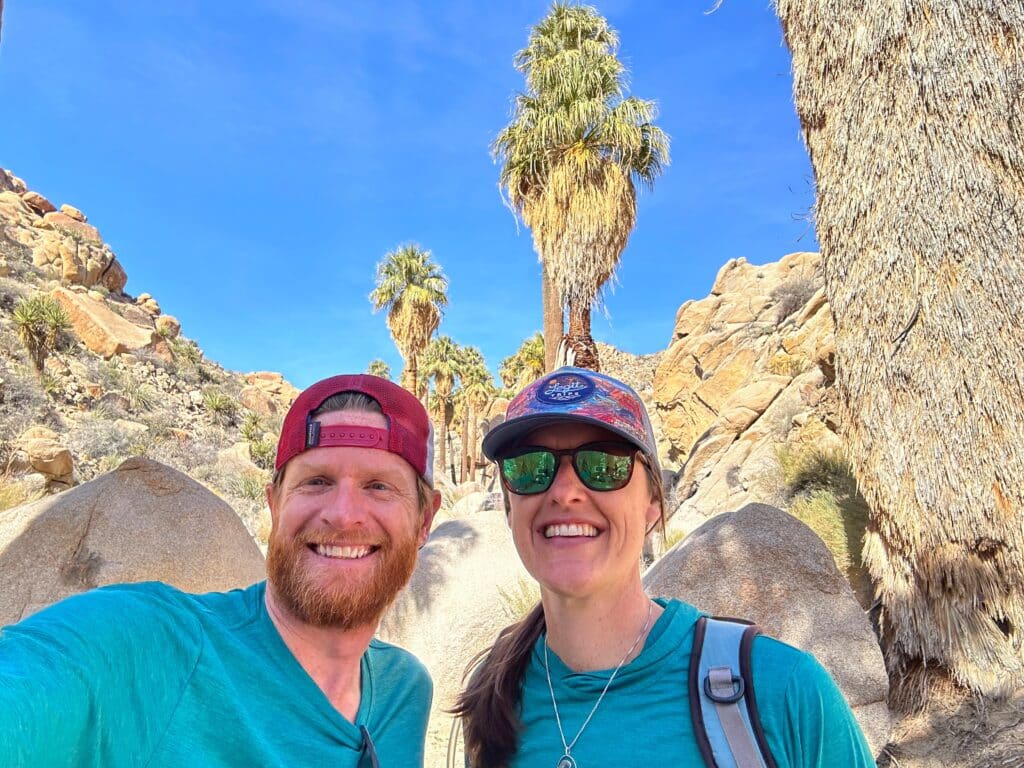
In fact, there aren’t even any Joshua Trees in the Southern part of the park because it’s too low in elevation with too little rainfall for them to grow. Don’t say I didn’t warn you!
So it’s not really about whether or not you’ll go to Joshua Tree for an RV trip (because you definitely should). It’s more about what type of experience you want to have, and what activities you want to get involved in.
Whatever you choose, we hope this guide helped prepare you to make the most of your RV trip to one of our national treasures, Joshua Tree National Park!
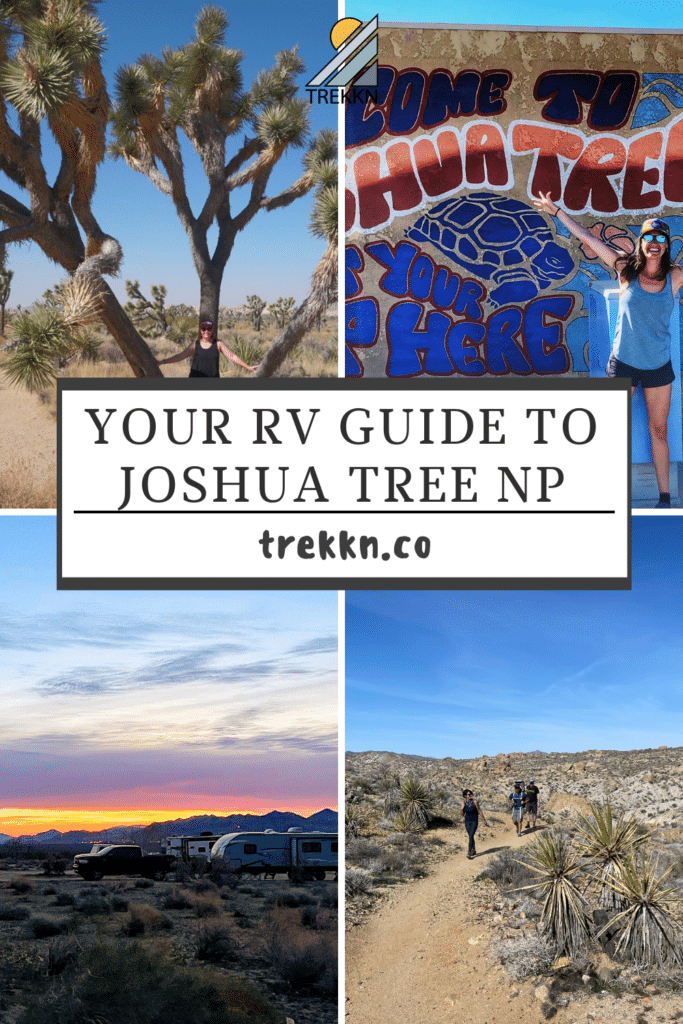
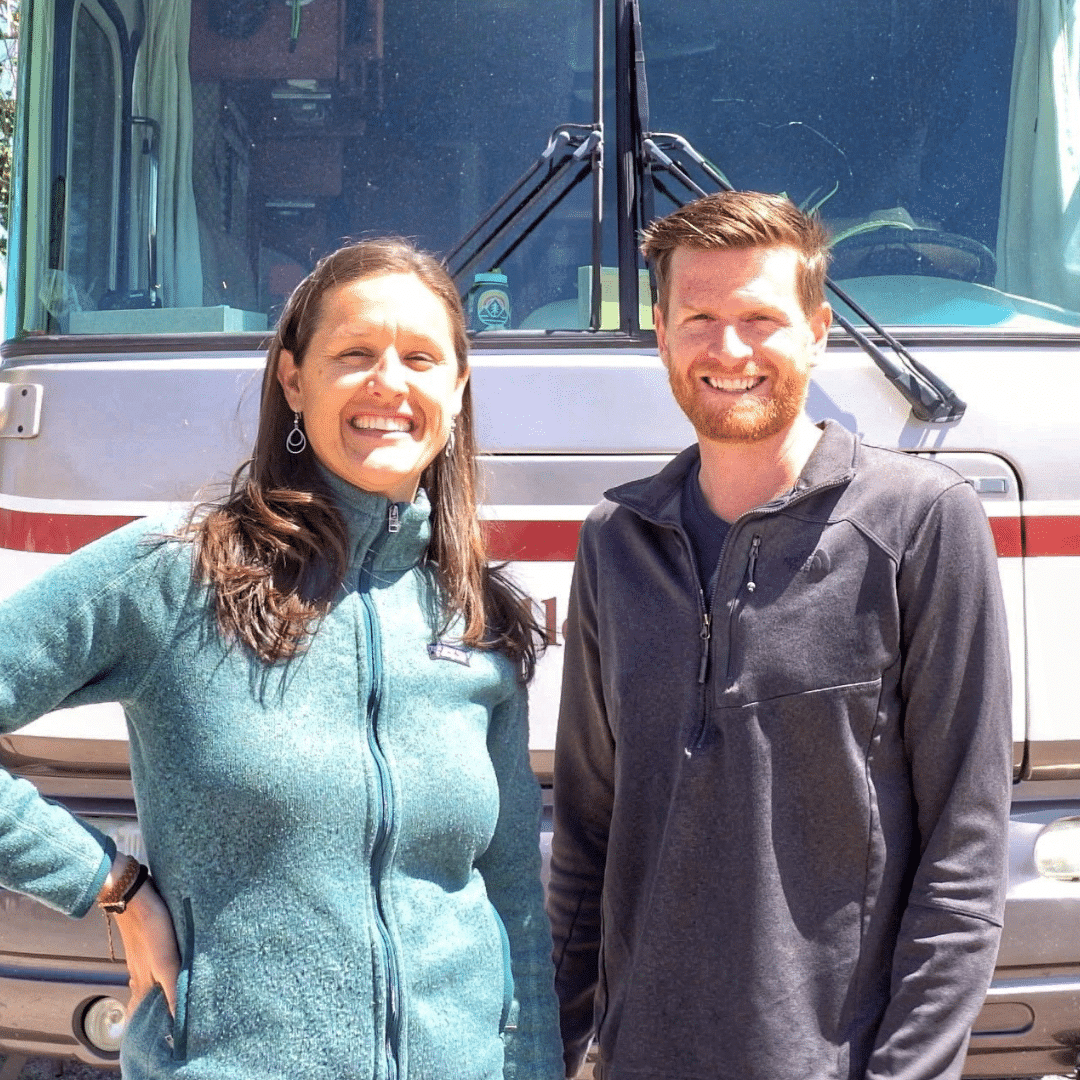
Kristen Bates lives & works from her RV, primarily boondocking off-grid. She owns and operates a women-led travel company, Legit Trips. Kristen loves to explore new places and inspire others to do the same. If she’s not typing away on her laptop, she’s off on an adventure- hiking, biking, or SUP boarding. You can follow her RV adventures @PerpetualMoves and learn more about her travel company at LegitTrips.com.


